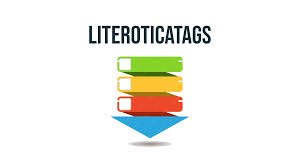In the ever-expanding universe of online storytelling, particularly within adult fiction and erotica communities, tags have become an essential tool for both readers and writers. One of the most commonly used and referenced systems is known as literoticatags. These tags are far more than just keywords; they serve as a roadmap for discovering, sorting, and filtering vast amounts of content based on themes, genres, pairings, and even tone. In the context of online erotica—especially on platforms like Literotica—these tags help users find the exact kind of story they are looking for, while also helping authors target the right audience for their work. Understanding the purpose, types, and best practices surrounding literoticatags is vital for anyone who engages in creating or consuming content in this niche yet highly popular digital space.
The Purpose of LiteroticaTags
Literoticatags fulfill a variety of critical functions in digital storytelling communities. For readers, they serve as a powerful discovery tool, allowing them to filter stories based on interests, desires, and comfort zones. Without literoticatags, readers would be left to wade through thousands of unrelated or unwanted stories, often stumbling upon content that may not align with their preferences or expectations. Tags offer a clear and immediate signal of what a reader can anticipate in a piece—whether that be the genre (e.g., sci-fi, fantasy), content type (e.g., consensual, taboo), or emotional tone (e.g., dark, romantic, humorous).
For writers, literoticatags offer a direct method of communicating with potential readers. Including relevant and accurate tags increases the visibility of their stories and enhances reader satisfaction by properly setting expectations. It also contributes to community standards by promoting transparency and mutual respect between creators and consumers. In short, tags help bridge the gap between creative intent and reader interpretation, making them a cornerstone of responsible storytelling online.

The Evolution of LiteroticaTags
Tags, in their earliest digital forms, were merely basic labels—often limited to genre or length. Over time, as user-generated content platforms matured and communities grew, there was a clear need to develop more nuanced and expressive tags. The erotica community, in particular, necessitated a robust tagging system due to the personal and sensitive nature of the content. Thus, literoticatags evolved from simplistic identifiers into a complex system of layered, customizable descriptors.
Today, the range of literoticatags spans from basic genre markers to detailed depictions of character relationships, plot devices, emotional dynamics, and even story structure. For instance, a single story could be tagged as “F/F,” “slow burn,” “dominance/submission,” “historical,” and “bittersweet ending” all at once. Each tag adds a new layer of depth and allows users to form a comprehensive mental picture before they even read the first line. This evolution not only reflects the diversity of content available but also the increasing sophistication of reader expectations.

Common Categories of LiteroticaTags
Understanding the various types of literoticatags is essential for effectively navigating and using them. While the system is flexible, most tags fall into the following broad categories:
1. Genre Tags
These tags describe the general setting or backdrop of the story. Examples include “fantasy,” “sci-fi,” “romance,” “thriller,” or “historical.” Genre tags are often the first filter readers apply when browsing content, as they indicate the overarching world in which the narrative unfolds.
2. Relationship or Pairing Tags
One of the most important tag types in literotica is the pairing or relationship tag. These indicate the nature of romantic or sexual relationships in the story, such as “M/F,” “F/F,” “M/M,” or more specific dynamics like “teacher/student” or “boss/employee.” These tags are particularly important in erotic fiction, as they shape the reader’s expectations and determine emotional or power dynamics.
3. Kink or Content Tags
These describe the specific sexual or fetish content within a story. Examples include “BDSM,” “voyeurism,” “submission,” or “taboo.” These tags help readers find stories that align with their interests and also provide necessary content warnings for those who wish to avoid certain themes.
4. Tone and Style Tags
Tone tags indicate the mood or emotional arc of the story, such as “dark,” “light-hearted,” “romantic,” “angst,” or “humor.” Style tags might include descriptors like “slow burn,” “PWP (plot, what plot?),” or “drabble.” These offer insight into the pace, depth, and seriousness of the narrative.
5. Content Warning Tags
These are crucial for community safety and consent. Tags such as “non-consensual,” “violence,” “abuse,” or “incest” serve as both warnings and filters. They ensure that readers can make informed choices about what they engage with, and writers can clearly mark their work as appropriate for a specific audience.

Benefits of Using LiteroticaTags
When used properly, literoticatags offer a multitude of benefits to both readers and writers. For readers, they create a personalized browsing experience, enabling them to bypass irrelevant or undesired stories while honing in on exactly what they’re seeking. For example, a reader might want a story that includes “slow burn,” “M/M pairing,” and “office romance.” With well-applied tags, they can find this story within seconds rather than sifting through hundreds of unrelated pieces.
For writers, tags act as free marketing. Stories with precise and accurate tags are more likely to show up in relevant searches and attract the right audience. This not only boosts visibility and readership but also leads to more positive feedback and engagement, since the audience’s expectations are more likely to be met. Moreover, tags foster a culture of accountability and mutual respect. Writers who are transparent about their content build trust with their readers, which can be invaluable in tight-knit communities.
Best Practices for Tagging Stories
To make the most of literoticatags, writers should adhere to a few best practices:
- Be Honest and Accurate: Always tag your story based on its actual content. Avoid misleading tags just to attract views; this creates mistrust and can harm your reputation.
- Be Specific but Not Overwhelming: Use specific tags that clearly describe your story’s themes, but don’t overload your work with dozens of tags. Aim for clarity, not quantity.
- Consider Your Audience: Think about how your target reader might search for stories. Would they use the term “submission” or “D/s”? Use language and tags that reflect your community’s norms.
- Use Established Tags: Whenever possible, stick to commonly accepted tags within your platform or community. This increases the chances that your story will appear in relevant searches.
- Include Content Warnings: Even if your story has artistic or narrative merit, if it contains potentially triggering content, always include appropriate warning tags.
- Update Tags When Needed: Sometimes, stories evolve, or a platform’s tagging norms change. Be proactive about updating your tags to reflect the story accurately over time.
The Social Dynamics of LiteroticaTags
It’s important to understand that literoticatags do not just serve a technical purpose—they also shape the social culture of a writing community. Tags help establish boundaries and shared language. They create a space where users can interact safely and comfortably. For marginalized or underrepresented groups, tags offer visibility and validation. Writers can use tags to highlight specific identities, experiences, and perspectives that might otherwise be drowned out in more general categories.
Tags also contribute to discussions and critiques. Readers often use tags to start conversations about tropes, character dynamics, or community trends. Over time, some tags even evolve into genres of their own, with dedicated followings and stylistic expectations. This gives rise to micro-communities that center around particular storytelling themes, such as “hurt/comfort” or “enemies to lovers.”
Also read: Chubbs4L20: The Digital Movement Redefining Online Culture
Conclusion
In the world of online erotic fiction and storytelling, literoticatags are far more than a technical feature—they are a cultural framework. They facilitate discovery, protect reader well-being, enhance communication, and foster creative expression. Whether you’re a seasoned author or a first-time reader, understanding how to use and interpret literoticatags can dramatically improve your experience in the community.
By paying attention to how you apply and respond to these tags, you not only improve your own browsing or publishing outcomes but also contribute to a richer, more respectful digital storytelling environment. In a space where words carry deep emotional and psychological weight, tags serve as both a guide and a safeguard—a small but powerful tool in the ever-evolving landscape of online literature.

